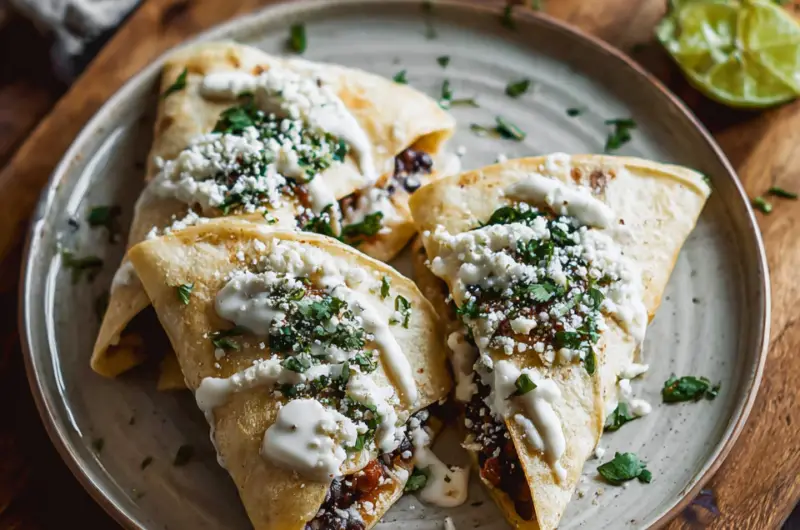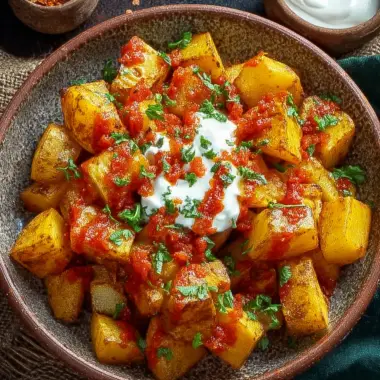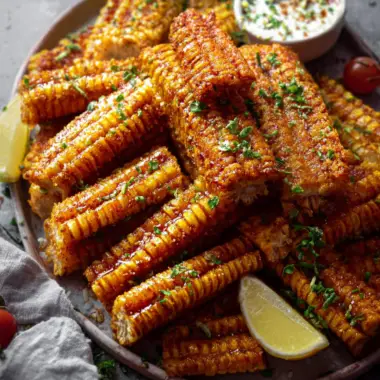The tetela is a time-honored antojito (little craving) from the southern regions of Mexico, especially Oaxaca, where corn reigns supreme. With its unique triangular shape and delicate layers of masa enclosing a flavorful filling, the tetela is more than just a street snack it’s a cultural heirloom passed down through generations. These masa pockets can be grilled over a comal and filled with a variety of ingredients, but one of the most iconic versions includes refried black beans and quesillo, the beloved Oaxacan string cheese. This dish is not only delicious but also deeply symbolic of the resourcefulness and creativity found in traditional Mexican cooking. The simplicity of masa dough combined with pantry staples like beans and cheese transforms into a satisfying, hand-held meal. Whether you enjoy them for breakfast, lunch, or a light dinner, tetelas make a versatile, customizable dish perfect for any occasion. Serve them with crema, spicy salsa, or a few avocado slices for a complete and comforting experience.
Full Recipe:
Ingredients:
-
2 cups masa harina
-
1½ cups warm water
-
1 teaspoon salt
-
1 cup refried black beans
-
1 cup quesillo (Oaxacan string cheese), shredded
-
1 tablespoon vegetable oil
-
Optional: salsa, crema, avocado slices for serving
Directions:
-
In a large mixing bowl, combine masa harina and salt. Gradually add warm water, mixing with your hands until a soft, pliable dough forms. Let rest for 10 minutes.
-
Divide the dough into 8 equal balls. Flatten each ball into a round tortilla shape using a tortilla press or your hands.
-
Spoon about 2 tablespoons of refried black beans and a small handful of shredded quesillo into the center of each tortilla.
-
Fold the edges of the tortilla into a triangle shape by folding three sides inward, sealing the filling inside. Press lightly to secure.
-
Heat a comal or large skillet over medium-high heat. Brush with a bit of oil.
-
Cook each tetela for 2–3 minutes on each side, or until lightly charred and cooked through.
-
Serve warm with optional salsa, crema, and avocado slices.
Prep Time: 20 minutes | Cooking Time: 20 minutes | Total Time: 40 minutes
Kcal: 210 kcal | Servings: 8 tetelas
A Cultural Snapshot of Tetelas
When it comes to Mexican cuisine, few regions hold as much culinary prestige as Oaxaca. Known as the “land of seven moles,” Oaxaca is a vibrant melting pot of indigenous culture and rich food traditions. Among its many delicious offerings, tetelas stand out as a lesser-known but deeply loved antojito or “little craving” cherished for both its humble ingredients and comforting flavors.
Tetelas are triangular-shaped masa pockets, traditionally stuffed with a simple combination of refried beans and cheese, then cooked on a comal (a flat griddle) until lightly crisp on the outside and warm and melty inside. The texture is delightfully rustic, offering a slight chewiness from the masa, contrasted with the creamy richness of the filling. It’s this simplicity and versatility that make tetelas so special they are a dish of the people, easily made with everyday pantry items but capable of delivering deep satisfaction and cultural resonance.
The Origins and Evolution of Tetelas
The word tetela is said to derive from Nahuatl the language of the Aztecs and roughly translates to something folded or layered. Its indigenous roots trace back centuries, long before the Spanish conquest. Historically, corn masa has been a cornerstone of Mesoamerican diets, serving as the foundation for tortillas, tamales, tlayudas, and yes tetelas.
In their original form, tetelas were likely made by hand with freshly nixtamalized corn, shaped and filled without the need for metal presses or modern tools. Over time, different regions in southern Mexico have developed their own interpretations. In Oaxaca, the most popular fillings include refried black beans, quesillo (a stretchy, mozzarella-like cheese), and occasionally a spoonful of spicy salsa. In some versions, they’re even stuffed with vegetables, meats, or herbs, making them incredibly adaptable.
Though they remain a staple in local homes and markets, tetelas have more recently begun to gain attention in upscale restaurants and among foodies worldwide who seek authentic culinary experiences. Their presence on international menus is helping introduce a broader audience to the beauty of regional Mexican food beyond tacos and burritos.
Why Tetelas Deserve a Place on Your Table
What makes tetelas truly remarkable is their combination of simplicity and depth. They rely on a short list of ingredients masa harina, water, salt, beans, cheese yet deliver flavor that feels both nourishing and indulgent. When pan-toasted to perfection, tetelas achieve a tender yet slightly crispy exterior, which gives way to a savory, molten center.
They are naturally vegetarian and gluten-free, and can easily be customized to suit dietary preferences. Want to make them vegan? Use mashed avocado, sautéed mushrooms, or a plant-based cheese alternative. Looking to add more protein? Shredded chicken, chorizo, or scrambled eggs would fit right in. The format is forgiving, which makes tetelas a go-to recipe for home cooks of all skill levels.
Another reason to love tetelas is their versatility in terms of meal timing. They’re ideal for breakfast alongside coffee and crema, as a lunchbox-friendly midday snack, or even as a casual dinner paired with a side salad and salsa. You can prepare them in advance, store them in the fridge or freezer, and reheat them on a skillet with little effort. They’re meal prep gold for busy weeks.
The Heart of the Dish: Masa and Quesillo
At the heart of tetelas is masa, a dough made from ground nixtamalized corn. This process which involves soaking and cooking the corn in an alkaline solution before grinding enhances both the nutritional value and the digestibility of the corn. It also imparts a distinct flavor and aroma that defines so many Mexican staples. While fresh masa is ideal, masa harina (dried corn flour) is widely available in international markets and works wonderfully for making tetelas at home.
Then there’s quesillo, also known as Oaxacan cheese. This cheese is a delight in its own right slightly salty, stringy, and meltable, often sold in balls or braids. It’s somewhat similar to mozzarella but with a richer dairy note. When combined with the earthiness of black beans and the warm, nutty flavor of masa, quesillo elevates the filling with its gooey texture and indulgent taste.
If you can’t find quesillo, mozzarella or string cheese can be used as substitutes, though they won’t have quite the same authentic touch.
Cooking Technique: From Press to Comal
Making tetelas involves a few simple but satisfying techniques that engage the senses. First, the masa dough is shaped into balls and then flattened either by hand or using a tortilla press into small, thick circles. The filling is spooned into the center, and then each circle is folded into a triangle, with the three edges overlapping to form a sealed pocket.
Cooking them on a comal (or heavy skillet or griddle) is the key step that brings everything together. A well-heated comal creates those signature charred spots while locking in moisture. Brushing the surface with a little oil can add extra flavor and a slight crispiness. In just a few minutes per side, you’re rewarded with golden, toasted tetelas ready to be enjoyed.
Toppings and Pairings to Elevate Your Tetelas
While tetelas are delicious on their own, adding toppings or sides can take them to another level. Here are a few ideas:
-
Salsa roja or verde: A spoonful of homemade salsa adds spice and brightness.
-
Mexican crema or sour cream: Adds creaminess that balances the earthy filling.
-
Avocado slices or guacamole: For richness and a cool contrast.
-
Pickled onions or radishes: Adds acidity and crunch.
-
Fried eggs (for breakfast tetelas): Perfect for making them a morning feast.
On the side, you can serve rice, grilled vegetables, or a small salad of jicama, cucumber, and lime. Drinks like agua fresca, horchata, or a warm café de olla pair beautifully.
Tetelas as a Symbol of Connection
Beyond their taste, tetelas serve as a reminder of cultural continuity. They are often passed down through generations, made together as a family, or sold by street vendors who learned the craft from elders. In a fast-paced world where many meals are eaten on the go, tetelas invite us to slow down, fold dough with intention, and celebrate the art of homemade food.
For food bloggers, educators, and recipe creators, sharing tetelas means keeping a living tradition alive. Highlighting their indigenous origins honors the people who created them and encourages us to look beyond the surface of “Mexican food” to its regional and ancestral richness.
Conclusion:
Whether you’re new to traditional Mexican cooking or a seasoned enthusiast, tetelas are a delightful dish to add to your culinary repertoire. They’re easy to make, endlessly versatile, and rich with cultural meaning. With just a few core ingredients, you can enjoy a meal that bridges past and present, simplicity and indulgence, comfort and community.
Perfect for breakfast, lunch, or a snack, tetelas are more than just food they’re a warm, flavorful embrace of tradition. So roll up your sleeves, fire up your comal, and start folding your way into the heart of Oaxaca.








